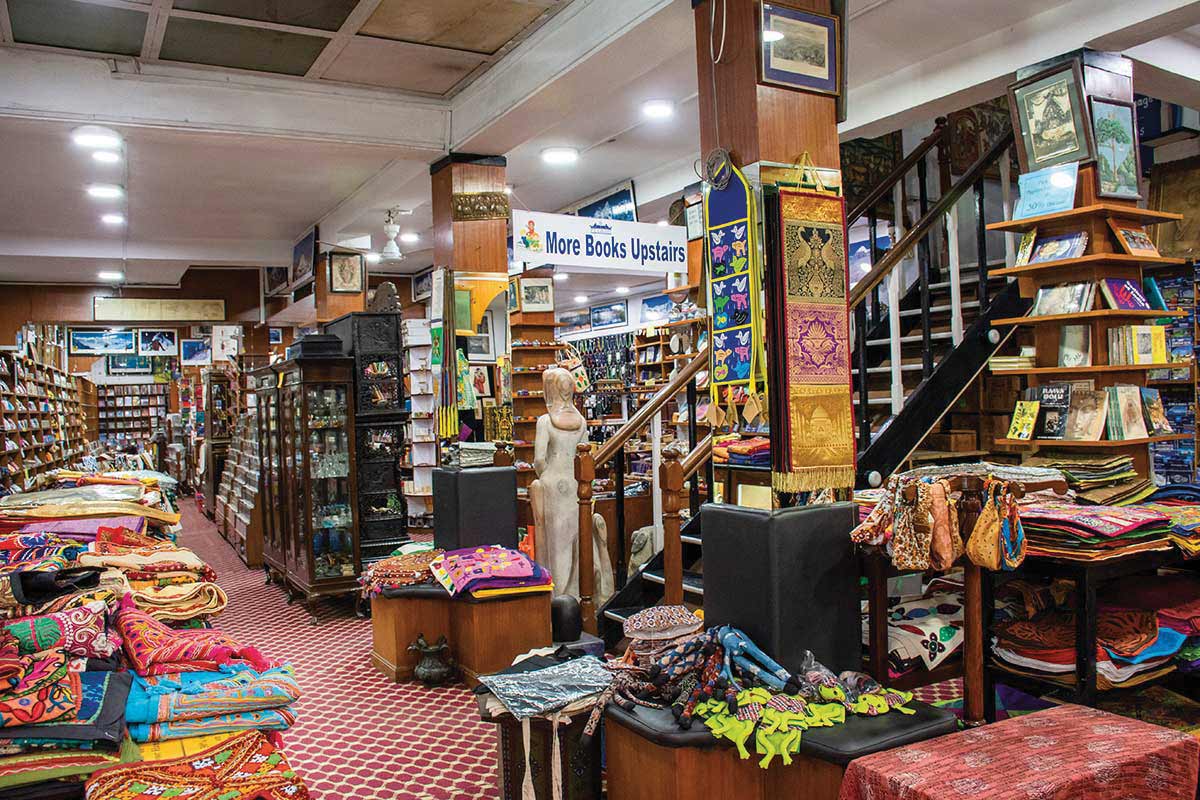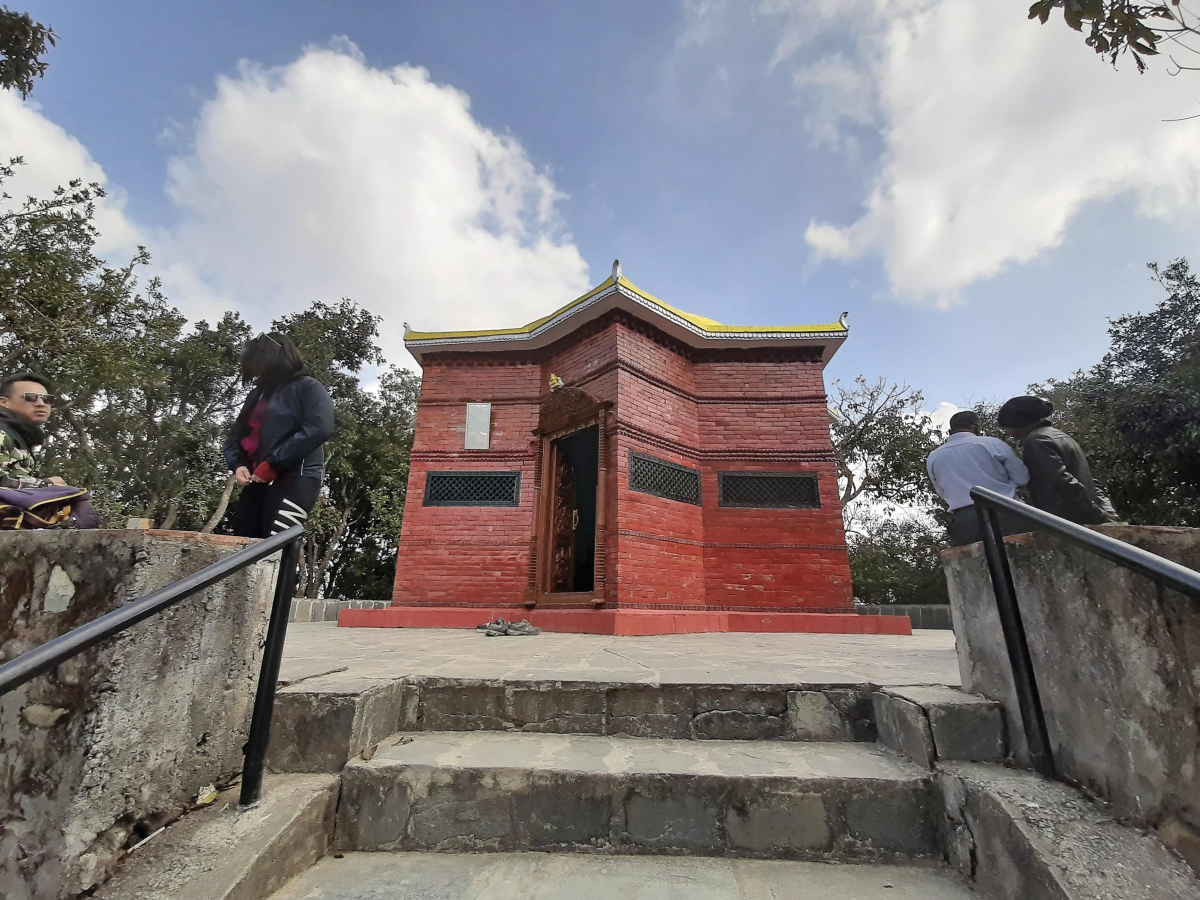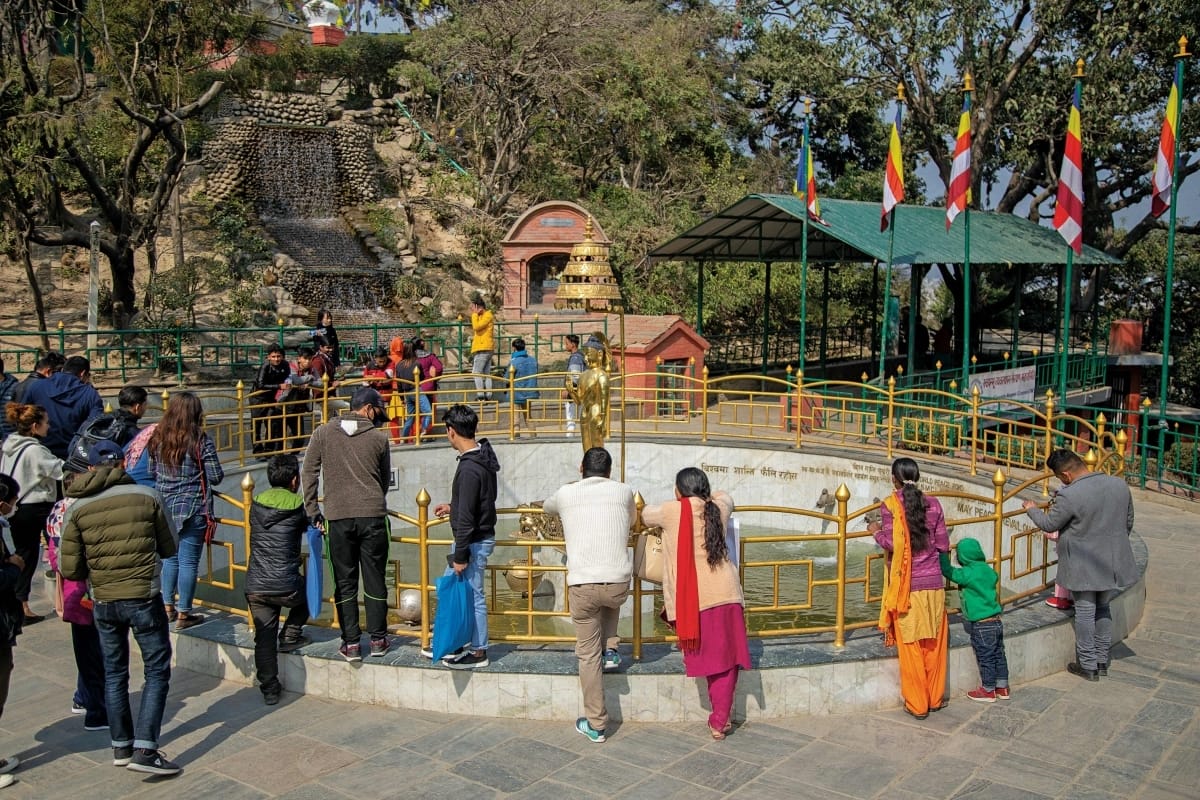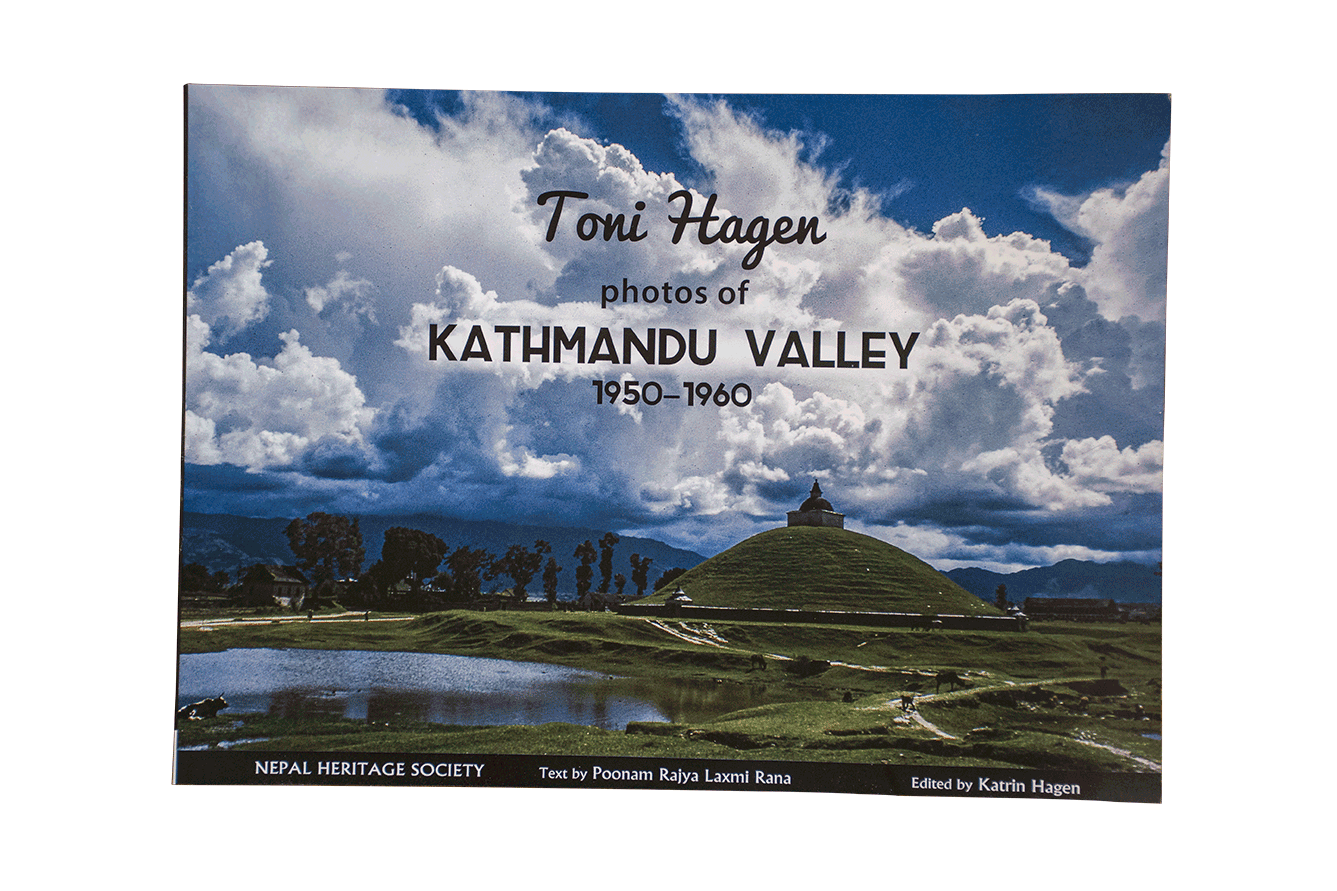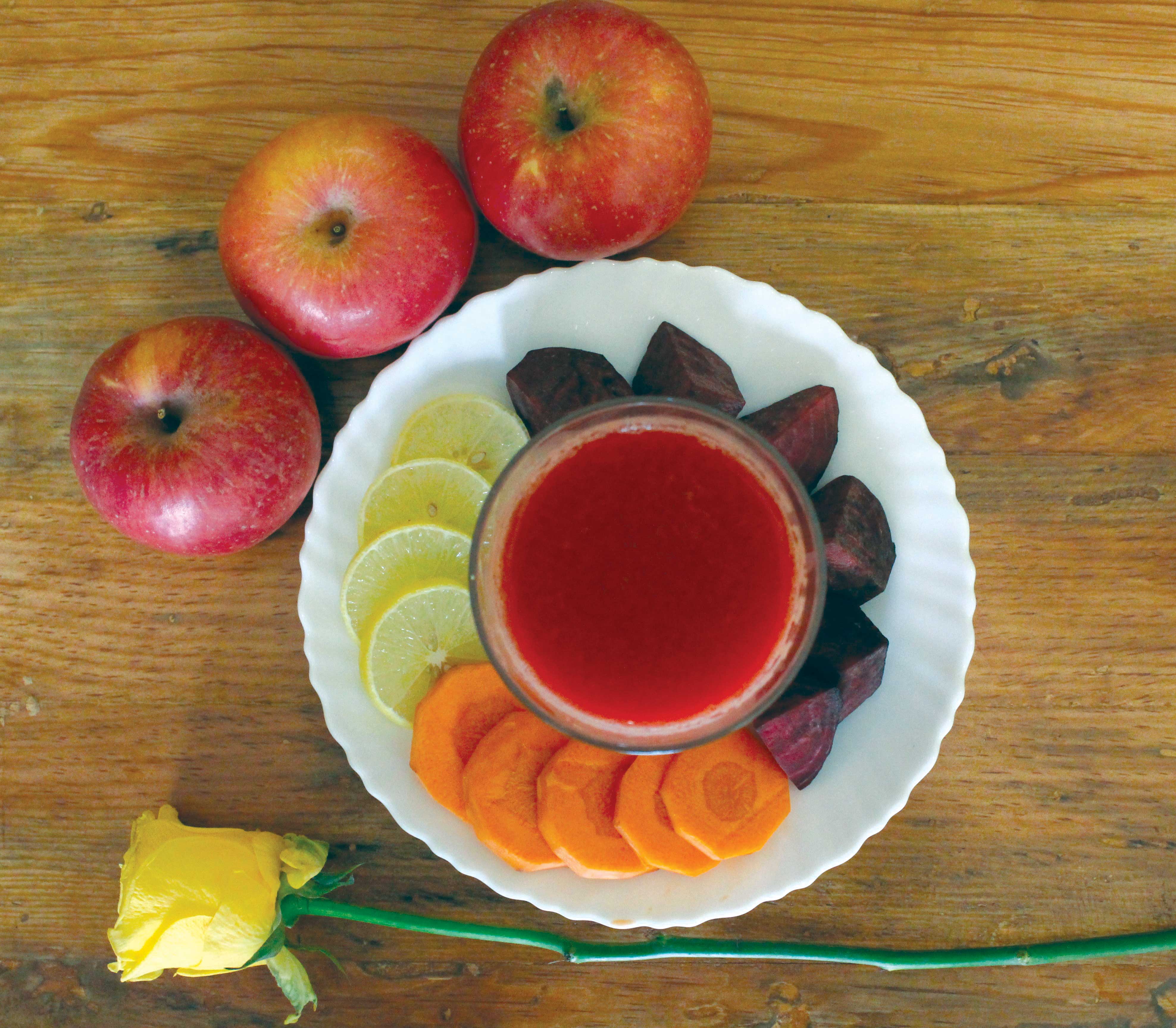It would be difficult to guess that behind the modest, unpretentious facade, this museum houses what is surely one of the most eclectic and varied collection of artifacts, utensils, coins and implements in all of Nepal.
Half-way up the stairs leading from the parking lot to Changunarayan Temple, past the craftsman carving a wooden mask, a quiet tea stall and a pack of sheep sits an unassuming brick building. It is tidy and clean, with mahogany painted doors and carved wooden window frames. Over the door, a deep red signboard has the words “Changu Museum.” written with pasted coins. It would be difficult to guess that behind the modest, unpretentious facade, this museum houses what is surely one of the most eclectic and varied collection of artifacts, utensils, coins and implements in all of Nepal. Visitors will find everything from an old cow gallstone to a centuries-old leather coin at this Changunarayan treasure trove.

The entrance is welcoming and promises much
The Changu Museum, which has been in operation for 11 years and is the only private museum in the country, not only preserves some of the most astounding and eccentric relics in Nepal, but also focuses on the history and origins of Changunarayan itself. Changunarayan, a short drive from Kathmandu, is nestled on a hilltop between Bhaktapur and Nagarkot. The main draw of the village is the temple located at the top of a long ascent of brick steps that cuts through the neat and orderly town, which is named as one of Nepal’s seven UNESCO World Heritage Sites.
A legendary history
The village’s namesake is Changu Narayan, the deity housed within the temple’s walls. There are other Narayan temples scattered around the Kathmandu valley, but Changunarayan is the oldest and most significant of the lot. Although it is difficult to confirm, Changunarayan Temple was supposedly erected sometime between the 4th and 5th centuries, which would make it one of, if not the oldest temple in Kathmandu Valley.

Although a private museum, it is very well organized
Neatly framed on the whitewashed wall just past the Changu Museum’s entrance are a series of seven watercolor paintings illustrating the mythical beginnings of Changunarayan, which, at the time, was only a forest of Champak trees. The story involves a cowherd who purchased a cow from a Brahmin which was prized for the large quantities of milk it produced. Every day the cow’s milk was secretly taken by a small child living in a tree unbeknownst to the cowherd. The Brahmin and the cowherd decided to cut down the tree where the child lived, thinking the milk theft was the work of an evil spirit. Inside the tree they found a beheaded Lord Vishnu, of which the child was an incarnation. The cowherd and the Brahmin begged pardon for their crime only to find that in Vishnu’s previous life, he had killed the Brahmin’s father, so he had now paid for his sin. From that day, a Changunarayan stone idol was erected and is still there today, housed within the grandiose and striking temple grounds.
“Changunarayan is an ancient place,” said Baishnav Raj Shrestha, the Changu Museum’s founder and curator. “People used to come here and ask me: ‘Aren’t there more things to see?’ So I decided if I can show them about the history, culture and religion of Nepal, they will be satisfied. So I thought about it, planned it and established it.” Shrestha, the mastermind behind the whole operation, has successfully created an engaging, awe-inspiring and culturally enriching museum that is absorbing for tourists and Nepalis alike. Foreign visitors will leave Changu Museum with a deeper respect for the heritage and traditions of the country and Nepalis will leave with a greater understanding and deference for their own roots. The Changu Museum’s guestbook is a testament in itself to the draw of the place. The book is filled with the names of guests from all over the world from Japan to Germany, and Sri Lanka to the United States.
 Recording the past
Recording the past
Throughout the three floors of the museum, artifacts are clearly displayed and labeled in both English and Nepali. In one corner there are preserved musical instruments, like a large drum called a dhime and two sets of metal cymbals called bhusyah, some of which are used in pujas and others for marriage ceremonies. There are weapons of war, like the famous khukuri knife, and an impressive battle shield, also known as a dhal, which is fashioned out of thick and leathery rhinoceros hide. “This shield was kept in my home for a long time,” explained Shrestha. He estimates its age at approximately 400 to 500 years old.
As Shrestha shuffles through the open museum space, explaining the significance of each item, the wow-factor of the relics only gets better and better. There is an item called a jwalankekan, also known as a “fire mirror,” which was the first mirror-like item in Nepal and is crafted out of metal. In one window cove are three bowls of preserved rice grains, one 140 years old, another 175, and the oldest at 225 years old. “In Nepal, when there is a childbirth, farmers often put aside rice for the memory of the birth,” Shrestha said.
A number of utilitarian implements can be found, like a spinning wheel, a balance scale, bronze measuring cups, a fishing net and a flour mill. Housed within a glass case are some especially surprising items from Nepali animals. There is a large, fist-sized gallstone coughed up by a cow, the navel of a musk deer, a turtle shell and the tooth of a rhinoceros. Sandwiched between two small sheets of glass is a brown leaf covered in a thick black squiggle, which was written by a crow. Shrestha, like his museum, is full of stories and a guided tour by him is therefore highly recommended, as his background stories on each item and his own personal history are often equally as interesting as the artifacts themselves.

Baishnav Raj Shrestha, the museum’s founder
The keeper of history
“I was born in that house over there,” he said as he pointed out a window of the traditional brick home next door. Shrestha was born and raised in Changunarayan, but left the village for a period when he was a child to complete his education in Kathmandu. When his schooling was finished, he returned to his roots in Changunarayan to be a social worker. He has been an active community participant and advocate ever since, even serving as the mayor of Changunarayan for five years. Shrestha is a collector by nature and says that a good portion of the items in his museum are his own, while some things were donated by others. “I had a lot of things that were good to show,” Shrestha said. “I’ve always collected all my things. Then, I went to the villagers, talked to them and collected things from them for the museum.”
Shrestha’s passion for collection is reflected in his superb accumulation of Nepali coins and bank notes, which he says he has been collecting for around 13 years. One of the most impressive items in the collection is an ancient leather coin that predates the use of metal coins in Nepal. Then there is one of the first copper coins in the country, dating back to the 5th century, which has a lion on one side and a goddess on the other. Shrestha says there were new coins issued whenever a new king took over the kingdoms of Patan, Bhaktapur and Kathmandu, which has led to a plethora of coin variations from centuries past. In addition to the vast coin collection, there are dozens of paper bank notes on display. The paper notes are divided by which king issued them, most of which have the face of that king emblazoned on their front. In recent times, with the absence of a king, the notes have images of Mt. Everest.

After a leisurely tour of Changu Museum, any visitor will surely be left in wonder at Nepal’s remarkable history, which has been so well-preserved by Shrestha. “I think people will leave fully satisfied by this museum,” Shrestha said after some thought. “People will leave with a new knowledge of the history of Nepal.


